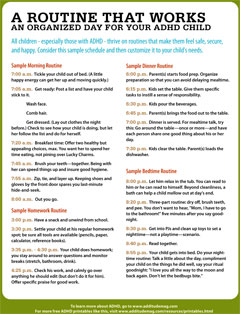Do you breathe a sigh of relief when your child finally heads off to school? Do you find yourself anxiously anticipating her return home, not knowing what mood she’ll be in? The morning routine didn’t go so well, so you pray that the afternoon will run more smoothly.
You can already see the homework struggles, and the distracted, impulsive behavior at the dinner table. You grab for a chocolate bar as a pacifier. What you may need, instead, are several effective sensory strategies for your ADHD child.
Children with attention deficit have a complex sensory motor system. When it doesn’t work efficiently, a child may act impulsively, get distracted easily, and become hyperactive. Many parents wonder: “Is my child’s behavior due to a brain-based challenge or a sensory challenge?” Often it is both.
The good news is that there are strategies and activities that appeal to all sensory types. If you address your child’s sensory challenges, chances are that she will focus better and stay calmer for longer after getting home from school.
You don’t need a degree in sensory typing to help you do this. The following activities work best when there is a behavior plan and a good reward system already in place.
> SET UP AN ACTION ROOM. Vestibular movement, such as swinging or rocking, has a positive effect on an overactive brain. As your child swings back and forth, his sensory nervous system perceives and integrates motion, which has a normalizing and calming effect on the brain. Install a doorway bar swing or a ceiling suspension swing. An outdoor swing set works well, too. I prefer “active” or “heavy-work” swings, such as a strap swing or trapeze bar swing, because the child has to really work at moving his body to increase motion.
> SETTLE THE BRAIN WITH A “CHILL SPA.” After a long, exhausting day at school, children need a calm place to crash, hang out, and relax. In the corner of a room or the basement, set up a thick-cushioned pad that she can crash onto, a large beanbag chair she can toss herself into, and soft pillows. Add a lava lamp or some fiber-optic lights for soft, soothing lighting. Give your child a weighted blanket or lap pad to place over her chest.
> CREATE AN OBSTACLE COURSE. Gather together chairs, footstools, hula hoops, and any other object that is movable. Lay out all the items on the kitchen, living room, or basement floor, spaced a foot or two apart. Have your child go over, under, and around the objects for 10 minutes. Put on music to make the activity more fun. Focusing on direction, balance, and coordination skills gives the brain a great workout.
> PLAY CATCH. Hand-eye coordination is fantastic for engaging the body and brain. Use a tennis ball or a beach ball and play a game of toss and catch. This activity enhances a child’s focus and organizational skills. To mix things up, have your child toss with the right hand and catch with the left. Then switch hands. If you have space, set up a Ping-Pong table. This game has a dramatic effect on a child’s ability to focus.
> CREATE A BREAK BOX. Set up a box containing a weighted lap pad, a soft, squeezable rubber ball, and any other fun stuff you can think of. Allow your kids to use the box before, during, or after homework. Manipulating, touching, and fidgeting create organized neural pathways for better focus.
> ENTERTAIN THE MOUTH. The mouth works as an amazing organizer for dealing with sensory input. After your child gets home from school, give her a crunchy snack that exercises the jaw muscles. Carrot or celery sticks, apple slices, or an ice pop work well. Sipping a drink through a straw, humming, or blowing bubbles also awakens the mouth. A vibrating toothbrush does wonders as well.
Individuals with attention deficit respond well to variety. Try one activity first, then switch to another, noting which one helps your child the most. After introducing these activities to your child, chances are that he will be a lot calmer after school than he was before he left home.





